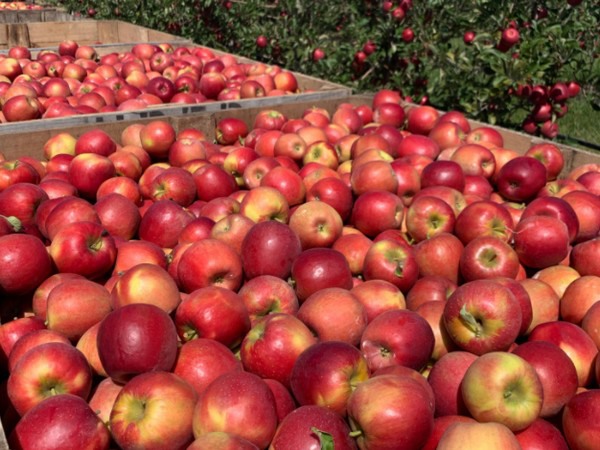The U.S. Apple Association said yesterday that apple exports to Southeast Asia have declined by 40 percent in the last three years.
The drastic drop in exports is especially being felt as Chinese New Year (Feb. 1) gets underway. The holiday helped secure a large market for the U.S. apple industry prior to a series of retaliatory tariffs imposed by China. USApple is calling on the Biden Administration to eliminate Sec. 232 and 301 tariffs on Chinese products so that China in turn will drop its retaliatory tariffs on U.S. products including apples.
“There is a long, rich heritage in Southeast Asian countries of gifting apples as a gesture of friendship and good health during Chinese New Year,” said USApple president and CEO Jim Bair. “This tradition helped carve a prominent space for U.S. apple exports for those celebrations. Sadly, this year most of those apples won’t be from the U.S.”
Overall, U.S. apple exports have taken a big hit in recent years. Washington State, responsible for about 95 percent of U.S. apple exports, is at a 22-year low with only 21.3 percent of its apples being exported. This is in comparison to what was a 32 percent average annual export from Washington State prior to retaliatory tariffs being put in place in 2018. Current Chinese tariffs on U.S. apples are at 50 percent.
 Photo: U.S. Apple Association
Photo: U.S. Apple Association
Apples staying at home
“All varieties of apples are being impacted. The apples that should have been exported instead stay in the U.S., overhanging the market and impacting prices for growers nationwide,” said Tracy Grondine, vice-president, communications, U.S. Apple Association.”
The state of the supply chain is only exacerbating the issue. “Some of course is the supply chain. But it’s not close to the impact of tariffs. If the tariffs price us out of the China market, it doesn’t really matter what the shipping problems are,” says Grondine.
According to Bair, the U.S. apple industry finally achieved full access to the Chinese market in 2015. “Exports quickly grew to 2.5 million boxes per year making China our sixth-largest export market. Sadly, we lost the momentum and growth potential due to the confluence of excessive tariffs, as well as continued supply chain and shipping issues. We continue to urge the administration to find a solution that will ease the tariffs on U.S. apples.”
Yet for now, prospects for progress at this moment are depressing says Grondine. “While we argue for the Administration to negotiate a reduction or better yet an elimination of the tariffs, there are other powerful groups arguing for continuation or even expansion of tariffs,” Grondine adds.
 For more information:
For more information:
Tracy Grondine
U.S. Apple Association
Tel: +1 (703) 442-8850
tgrondine@usapple.org
www.usapple.org
